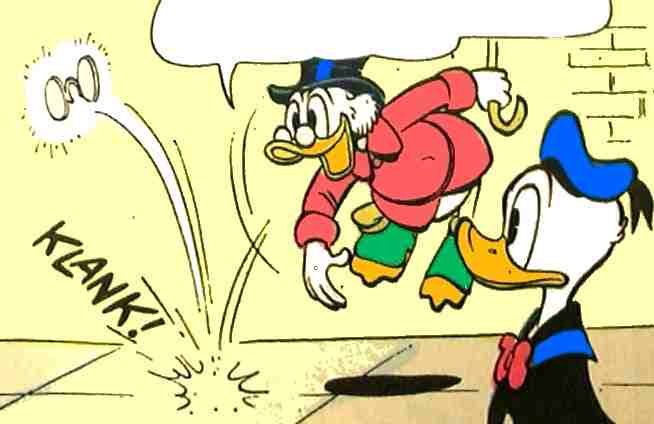 |
|
U$38
The Unsafe Safe - 1962 Synopsis:
Scrooge's technicians have invented
unbreakable glass but what can it be used for?
Well, the Money Bin could be encased in it...
Comments:
At the time of the story plastic was far
from being as well known and used as it is today.
Although Barks never uses the word Plastic in the
story it seems that Scrooge's pince-nez glasses
are made from a similar compound. Since the story
was published the world has taken plastic in to
such an extent that it is reasonable to state
that we cannot function without it!
It is suggestive to follow Barks' growing
knowledge of the material in his work; in his
last short cartoon Plastics Inventor
from 1944 Donald bakes a plastic airplane that
dissolves in a rainstorm. The plastics industry
was in its infancy then, producing a weak and
brittle plastic, but the material was never so
poor that it would melt in water. Obviously Barks
did not know that at the time.
Furthermore, in WDCS171 'Sealing the
Money Bin' from 1954 Donald seals the
Money Bin in Impervi-Wax which makes it totally
impenetrable. It can be speculated that Barks did,
in fact, have soft, viscous plastic in mind when
he made the story.
|